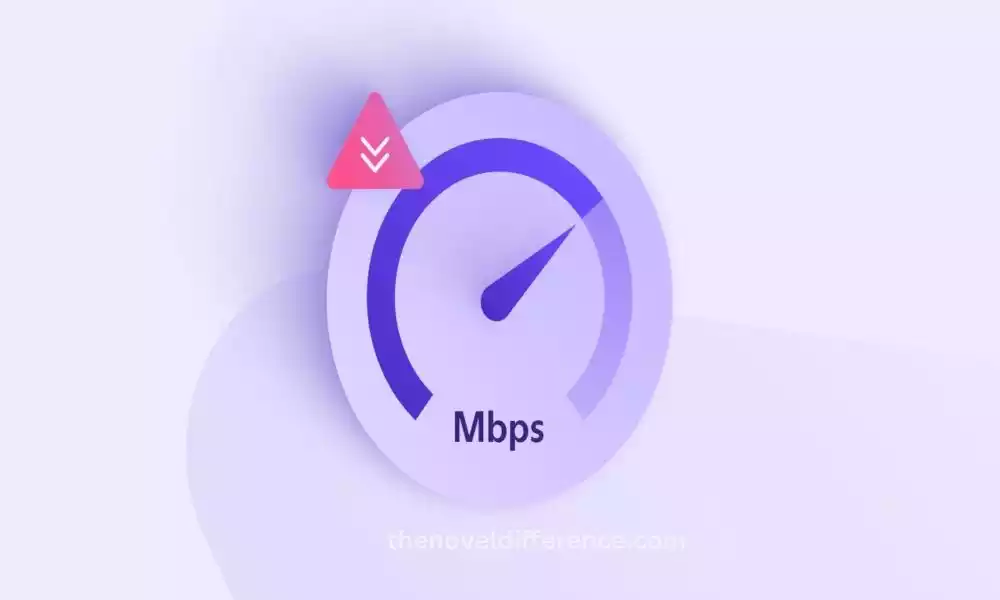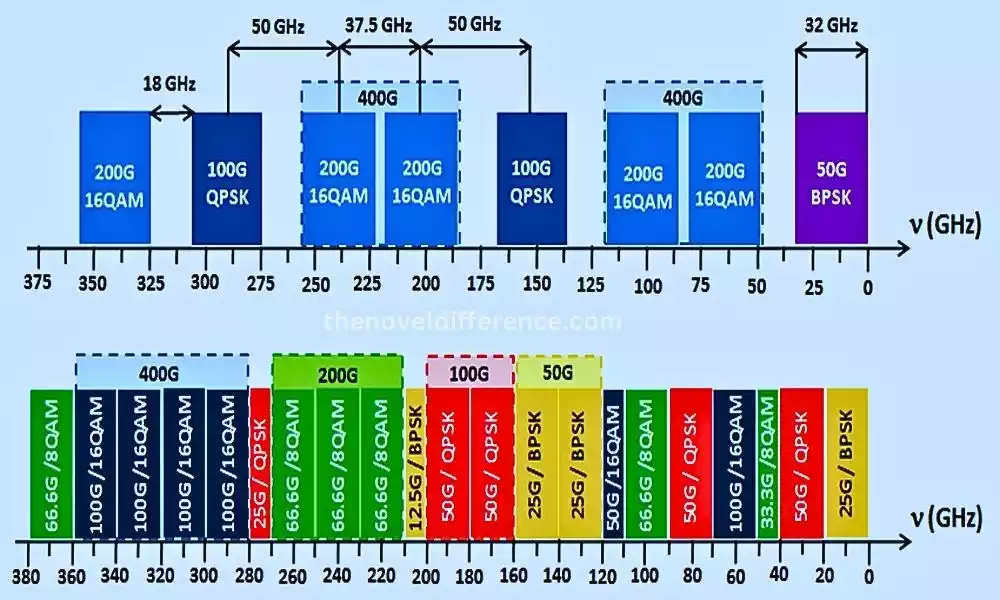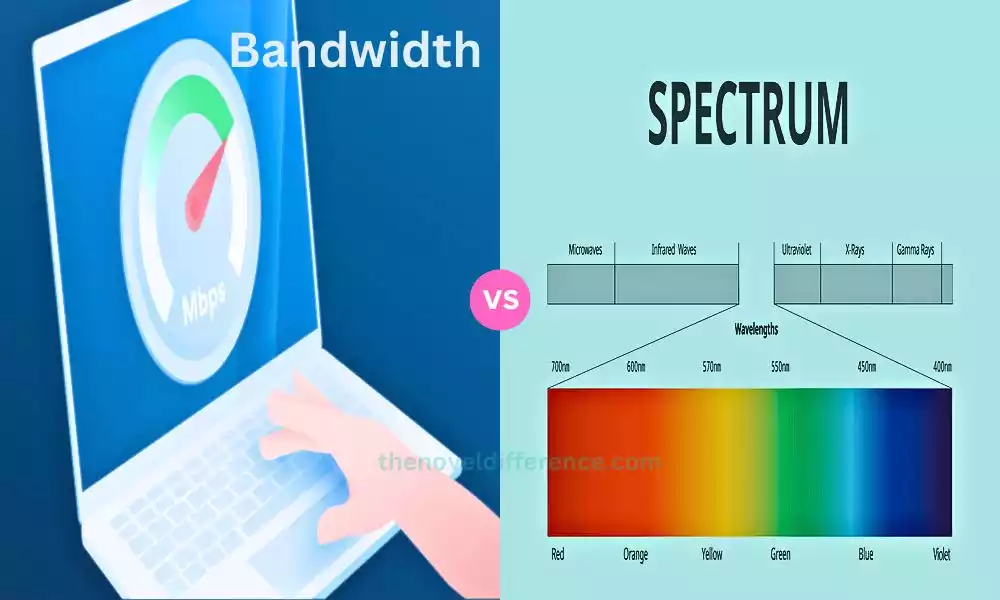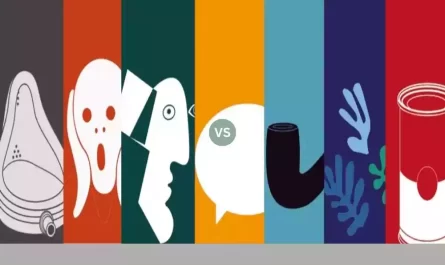Introduction to bandwidth and spectrum as fundamental concepts in data transmission
Data transmission plays a fundamental part in modern society’s interconnection, providing communication and information exchange platforms. Two fundamental concepts that underpin the efficient transfer of data are bandwidth and spectrum. While closely related, these terms have distinct meanings and significance in the field of data transmission.
Bandwidth refers to the capacity or range of frequencies that can be transmitted through a communication channel. Bandwidth measures how much data can be transmitted in an amount of time.
Bandwidth can either be expressed as one frequency or as multiple frequencies that make up its spectrum. Transmission speeds determine how quickly data can be sent across a communication network and can significantly impact its efficiency and performance.
Spectrum refers to all electromagnetic frequencies available for communication use. The electromagnetic spectrum includes numerous frequencies encompassing an expansive array of wavelengths: microwaves, radio waves, visible light wavelengths (including UV rays and infrared temperatures), infrared temperatures, ultraviolet wavelengths as well as X-ray/gamma radiation rays.
Each region corresponds to a specific frequency range. Spectrum allocation involves dividing this range of frequencies into different bands for different applications, such as radio broadcasting, mobile networks, Wi-Fi, and more.
While bandwidth refers to the capacity within a given communication channel, spectrum refers to the entire pool of frequencies available for use. Bandwidth can be seen as a subset of the spectrum, representing the specific range of frequencies allocated for a particular communication channel.
Understanding the difference between bandwidth and spectrum is crucial for effectively managing and optimizing data transmission systems. By allocating appropriate bandwidth within the available spectrum, communication networks can achieve higher data transfer rates, reduce interference, and ensure reliable connectivity.
We will delve deeper into the concepts of bandwidth and spectrum, exploring their definitions, relationships, applications, and future trends. By gaining a comprehensive understanding of these fundamental concepts, we can better appreciate their significance in the realm of data transmission.
What is bandwidth?
Bandwidth refers to the maximum capacity or frequency range that any communication channel is capable of transmitting in any one second; it essentially represents how much data can be sent over that channel at once. Bandwidth can either be expressed as one single frequency or spectrums of frequencies.

Bandwidth determines the speed at which data can be transmitted and affects a communication system’s overall efficiency and performance. Greater bandwidth can provide more data transfer speeds that allow more significant amounts of data to be sent in less time. A lower bandwidth limits the quantity of data that can be transferred, which results in slow data transfer rates.
Bandwidth is affected by many elements, including the physical characteristics of the channel, for example, its capacity to transmit signals without interference or distortion. The bandwidth available can be restricted by variables like the properties of the medium that transmits (e.g. optical fibers, copper wires wireless channels) and the electronic components that are used to transmit data.
In practical terms, bandwidth refers to the data rate or capacity of a communication channel. For instance, in the Internet connection context bandwidth is commonly described as what speed data may be transferred via the Internet to the device of the user (download speeds) as well as from the device of the user to the Internet (upload speeds).
Internet service providers (ISPs) typically offer various bandwidth options to suit different user requirements; from low bandwidth connections suitable for web browsing to faster connections ideal for streaming media and gaming online.
It’s important to note that bandwidth is not synonymous with data volume or data size. Bandwidth refers to the rate at which data transfers, while data volume or size refers to how much is transmitted or stored.
An internet connection with high bandwidth enables faster transfer of large files; however, their volume depends on various factors including file size and transfer duration.
Bandwidth is the capacity or range of frequencies available for data transmission through a communication channel. Speed and efficiency of data transfer are directly affected by memory availability; more can be sent over an allotted amount of time.
Definition and Explanation
Bandwidth in data transmission refers to the maximum data rate that can be transmitted over any communication channel. It represents the range of frequencies or the capacity of the channel to carry signals. Bandwidth is generally measured in hertz (Hz). This indicates the range or width of frequencies which can fit within one channel.
To understand the concept of bandwidth, imagine a highway with multiple lanes. Each lane represents a different frequency or portion of the spectrum. The total bandwidth would be the combined width of all the lanes. The wider the lanes (higher bandwidth), the more vehicles (data) can pass through simultaneously, resulting in faster data transmission rates.
Bandwidth determines the speed or rate at which data can be transmitted. Setting an upper limit to how much information can be transmitted within a set period. Important to keep in mind is the fact that bandwidth alone does not indicate data transfer rates as these depend on other elements such as coding schemes, modulation techniques, and the efficiency of the transmission system.
Bandwidth is often associated with the capacity of different communication technologies or network connections. Computer-wise, the bandwidth of an internet connection is typically measured as bits per second (bps) – representing its highest potential data transfer speed.
Internet connections require bandwidth for smooth operation; bandwidth refers to both download and upload speeds that indicate how fast data can enter or leave an Internet server.
Bandwidth is an essential consideration for various communication systems. High bandwidth ensures faster data transmission rates, making real-time applications such as video streaming, online gaming, and video conferencing possible. It also contributes to improved overall network performance and responsiveness.
Bandwidth limitations can arise from several factors. The physical properties of the communication medium, such as the capacity of cables or the frequency range of wireless channels, can impose restrictions on the available bandwidth.
Network congestion, interference, and the presence of other devices operating within the same frequency range can affect the adequate bandwidth in a shared medium.
Bandwidth represents the maximum data rate transmitted through a communication channel. It determines the capacity of the channel to carry signals and affects the speed and efficiency of data transmission. By understanding and optimizing bandwidth utilization, communication systems can achieve higher data transfer rates and improve overall performance.
Measuring Bandwidth
Bandwidth is usually measured in hertz (Hz) or its multiples such as kHz, MHz, or GHz. These units represent the frequency range or width of the signal that can be accommodated within a communication channel.
When measuring bandwidth, it is important to consider the context and the specific application. Methods can vary depending on the nature and purpose of the signal or communication system involved.
Here are a few commonly utilized approaches:
Analog Signal Bandwidth: Analog signal bandwidths are typically measured as the difference in frequencies at which signal power drops below some specified fraction (such as 3dB of maximum power) This measurement is known as the “3 dB bandwidth” and provides a useful measure of the frequency range over which the signal carries significant energy.
Digital Signal Bandwidth: In digital communication systems, bandwidth is often associated with the data rate or bit rate of the signal. Bit rate refers to the rate at which bits are transmitted per unit of time. For instance, digital communication systems with an effective bit rate of 1 megabit per second require enough bandwidth capacity for transmitting 1 million bits in an instantaneous period.
Network Bandwidth: When talking about Internet connections and networks on computers bandwidth is typically expressed in terms of bits per second (bps). It indicates the maximum data transfer rate that can be accomplished across a network connection; typically measured using tools such as speed tests which send and receive packets to determine upload and download speeds.
Note that measured bandwidth does not always equate with an achievable data transfer rate due to multiple factors including signal coding techniques and protocol overhead. These factors can affect the efficiency of the communication system and impact the actual throughput.
Bandwidth is measured in hertz or its multiples and represents the frequency range or data rate that can be accommodated within a communication channel. The specific method of measuring bandwidth depends on the nature of the signal and the context of the communication system.
Whether measuring analog signal bandwidth, digital signal bandwidth, or network bandwidth, understanding the measurement methodology is essential for accurately assessing and optimizing data transmission capabilities.
What is Spectrum?
Spectrum refers to the entire range of electromagnetic frequencies available for communication purposes. Radio frequencies span a wide spectrum that spans from extremely low frequency (ELF) to extremely high frequencies (EHF) that includes microwaves, radio waves infrared radiation visible light transmission ultraviolet wavelengths, and even Gamma Rays and Xrays.

The electromagnetic spectrum is a fundamental concept in physics and plays a crucial role in various communication technologies and applications. Different frequency regions within the spectrum have distinct properties and are utilized for specific purposes based on their characteristics and interactions with the environment.
Here are some key regions within the electromagnetic spectrum:
Radio Waves: Radio waves are widely utilized for applications including broadcast radio, AM and FM radio broadcasting, television signal distribution, and wireless systems such as Wi-Fi and Bluetooth communications systems.
Microwaves: Ranging from a few gigahertz (GHz) to hundreds of gigahertz (GHz) microwaves are used in a variety of applications, ranging from microwave ovens, satellite communication systems, radar systems, and 5G/4G wireless networks all the way to their primary purpose for cooking!
Infrared (IR): Infrared radiation falls between microwave and visible light frequencies. It is commonly utilized in applications such as remote controls, infrared communication, thermal imaging, and certain medical treatments.
Visible Light Spectrum: Visible light represents that part of electromagnetic radiation detectable by human eyes. It ranges from approximately 400 to 700 nanometers (nm). Visible light is crucial for human vision and is utilized in lighting systems, displays, and optical communication technologies.
Ultraviolet (UV): Ultraviolet radiation has frequencies higher than visible light, ranging from about 10 nm to 400 nm. Ultraviolet light has applications in sterilization, fluorescence analysis, and certain medical treatments. Overexposure to UV radiation can be damaging.
X-rays and gamma rays: These are the highest frequency regions of the spectrum. X-ray frequencies range between approximately 0.10 nanometres to 10 nanometres; while gamma rays reach frequencies higher than 10 pm. X-rays are often employed for medical imaging, security screening, and industrial purposes. Gamma rays have applications in nuclear medicine, cancer treatment, and scientific research.
The allocation and management of different frequency bands within the spectrum are crucial for enabling and regulating various communication systems. Government and regulatory entities such as the Federal Communications Commission (FCC) in the US supervise spectrum allocation to avoid interference and maximize efficiency with available frequencies.
The spectrum covers the complete spectrum of electromagnetic frequencies including radio waves and gamma radiations that are used in communication, among other things.
Different frequency regions within the spectrum have specific properties and are harnessed for various technologies and purposes. Understanding and managing spectrum allocation is essential for efficient and reliable communication systems.
Definition and Explanation
Spectrum in terms of communication and electromagnetic waves refers to all frequencies or wavelengths that compose its electromagnetic spectrum, from extremely low frequencies (ELF) up to extremely high frequencies (EHF).
Electromagnetic waves can be defined by two characteristics; frequency (the number of complete oscillations or cycles per unit time) and wavelength. Frequency increases with wavelength decreases; similarly vice versa. These aspects of an electromagnetic wave’s nature are inextricably linked; as its frequency grows so will its wavelength decrease inversely and vice versa.
The electromagnetic spectrum may be divided into a variety of areas or bands according to the frequency of their wavelength. The spectrums include microwaves, radio waves, visible light, infrared lights ultraviolet radiation, the X-rays. They are all essential elements of our existence. Each region has its unique properties and interactions with matter.
Different applications and technologies utilize specific regions of the spectrum based on their requirements and characteristics.
For example:
Radio Waves: Radio waves feature long wavelengths and are commonly employed for long-distance communication purposes, including broadcast radio broadcasting, television transmission, wireless networking technologies like Wi-Fi and Bluetooth as well as radar systems.
Microwaves: With shorter wavelengths than radio waves, microwaves have various uses in satellite communication systems, microwave ovens, radar systems, and wireless communication technologies such as 4G/5G.
Infrared: Infrared radiation has wavelengths longer than visible light but shorter than microwaves. It is utilized in applications like remote controls, thermal imaging, infrared communication, and certain medical treatments.
Visible Light: Visible light is the portion of the spectrum that is detectable by the human eye. Color ranges from red (longer wavelength) to violet (shorter wavelength). Visible light is crucial for human vision and is used in lighting systems, displays, and optical communication technologies.
Ultraviolet: Ultraviolet radiation has shorter wavelengths than visible light. It is utilized in applications like sterilization, fluorescence analysis, UV lamps, and certain medical treatments. Overexposure to ultraviolet radiation can be harmful to living organisms.
X-Rays and Gamma Rays: Both gamma rays possess extremely short wavelengths with high frequencies; as such they’re used widely across industries from medical imaging and security screening, to industrial processes, nuclear medicine research, cancer therapy treatments, scientific investigations etc.
X-rays can be seen being utilized for imaging medical images while security screening provides security screening as a security check against dangerous objects; whilst Gamma rays find application in nuclear medicine treatments such as nuclear medicine treatment of cancer therapy research among others.
Effective management and allocation of the spectrum are essential to prevent interference between different communication systems and ensure efficient use of the available frequencies. Regulatory bodies and organizations establish guidelines and regulations for spectrum allocation, such as assigning specific frequency bands for particular applications or services.
Spectrum refers to the range of frequencies or wavelengths which comprise electromagnetic radiation. It encompasses different regions, each with its unique properties and applications. Understanding the spectrum is crucial for the development and deployment of various communication technologies and ensuring their efficient and reliable operation.
Types of Spectrum
Several types of spectrum can be categorized based on different factors and applications.
Here are some commonly recognized types of spectrum:
Continuous Spectrum: A continuous spectrum encompasses an unbroken range of frequencies or wavelengths without any gaps or missing portions. Natural sources of light such as the sun or an incandescent light bulb radiate an uninterrupted spectrum that encompasses various colors or wavelengths.
Discrete Spectrum: A discrete spectrum consists of individual and distinct spectral lines or peaks at specific frequencies or wavelengths. These spectral lines are characteristic of certain elements or compounds and can be observed in emission or absorption spectra. Discrete spectra are widely utilized across industries like spectroscopy and astrophysics for identifying substances as well as studying their properties.
Band-Limited Spectrum: A band-limited spectrum refers to a spectrum where the range of frequencies is limited or restricted within certain bounds. This limitation can occur due to various factors, including the characteristics of the transmission medium, signal processing techniques, or intentional filtering. Band-limited spectra are commonly encountered in communication systems, where specific frequency bands are allocated for different services or applications.
White Noise Spectrum: White noise is a random signal that contains an equal amount of energy at all frequencies within a specified range. Its spectrum appears flat or uniform across the frequency range, hence the name “white” noise. White noise is used in various applications, including signal processing, audio testing, and simulation studies.
Power Spectral Density: Power spectral density (PSD) describes the distribution of power or energy in a signal over different frequencies. It provides information about the signal’s strength or power at each frequency component. PSD is widely used in fields such as telecommunications, signal analysis, and system modeling.
Frequency Allocation Spectrum: This type of spectrum refers to the allocation of specific frequency bands for different communication purposes and services. Regulators such as the Federal Communications Commission (FCC) in the US allocate and administer frequency bands to limit interference and optimize the use of spectrum resources. The frequency allocation spectrum plays a crucial role in organizing and coordinating wireless communication systems, including radio broadcasting, cellular networks, Wi-Fi, and satellite communication.
Here are just a few examples of spectrums found across various fields. Each type of spectrum has its characteristics, applications, and significance in understanding and analyzing signals and communication systems.
Difference Between Bandwidth and Spectrum
Bandwidth and spectrum are related concepts in the field of data transmission and communication, but they represent different aspects of the signal and communication system.
Here are the key differences between bandwidth and spectrum:
1. Definition and Focus:
Bandwidth: Bandwidth refers to the range or capacity of frequencies that can be transmitted over a communication channel. Concentrating on transmitting as much data in as little time as possible, this method focuses on maximizing data throughput within any specified time.
Spectrum: Spectrum refers to the entire range of frequencies available for communication purposes. It encompasses all the different frequencies at which electromagnetic waves can propagate.
2. Measurement:
Bandwidth: Bandwidth is typically measured in hertz (Hz) and represents the frequency range or capacity of the communication channel to carry signals.
Spectrum: Spectrum is also measured in hertz (Hz) and represents the entire range of frequencies available within the electromagnetic spectrum.
3. Representation:
Bandwidth: Bandwidth is represented as a single frequency or a range of frequencies within the spectrum. It indicates the width or capacity of the channel for transmitting signals.
Spectrum: Spectrum refers to the entire electromagnetic spectrum and includes frequencies as varied as radio waves, microwaves, infrared radiation, visible light wavelengths ultraviolet wavelengths X-rays, and gamma rays.
4. The focus of analysis:
Bandwidth: Bandwidth focuses on the capacity and speed of data transmission within a specific channel. It determines the data transfer rate and affects the overall efficiency and performance of the communication system.
Spectrum: Spectrum focuses on the availability and allocation of frequencies for different communication purposes. It involves managing and regulating the distribution of frequency bands to prevent interference and ensure efficient use of the available spectrum.
5. Relationship:
Bandwidth and spectrum are related but distinct concepts. Bandwidth represents the capacity within a given communication channel, while spectrum represents the entire pool of frequencies available for communication. Bandwidth can be seen as a subset of the spectrum, as it refers to the specific range of frequencies allocated or utilized within a channel.
Bandwidth and spectrum are essential concepts in data transmission and communication systems. Bandwidth refers to the capacity or range of frequencies within a channel, focusing on the amount of data that can be transmitted.
Spectrum, on the other hand, encompasses the entire range of frequencies available for communication purposes. While bandwidth represents a specific portion of the spectrum, spectrum refers to the entire distribution of frequencies within the electromagnetic spectrum.
The Relationship Between Bandwidth and Spectrum
The relationship between bandwidth and spectrum can be described as follows:
Bandwidth refers to the maximum capacity or range of frequencies that a communication channel can transmit at one time. It represents the maximum data rate that can be achieved within that channel. In other words, bandwidth defines the width of the frequency range over which the channel can carry signals.
Spectrum, on the other hand, refers to the entire range of frequencies available for communication purposes. It encompasses all the different frequencies at which electromagnetic waves can propagate.
The spectrum encompasses various frequency regions including radio waves, microwaves, infrared radiation, visible light emission wavelengths ultraviolet wavelengths X-rays, and gamma rays.
Bandwidth is a subset of the spectrum. Within the spectrum, specific frequency bands are allocated or utilized for different communication purposes. These frequency bands represent the available bandwidths within the spectrum.
The available bandwidth is determined by the spectrum allocated for a particular communication system or application. Wireless communication takes advantage of specific frequency bands within the spectrum to accommodate technologies like Wi-Fi, cellular networks, and satellite communication systems.
The bandwidth allocated within those frequency bands determines the capacity and data rate of the communication system.
The relationship between bandwidth and spectrum can be understood as follows: The available spectrum provides the pool of frequencies within which bandwidths can be allocated for specific communication channels or systems. The bandwidth represents the capacity or width of the frequency range that can be utilized within the allocated spectrum.
It’s important to note that the available spectrum is a finite resource, and efficient management and allocation are crucial to prevent interference and ensure optimal utilization. Regulatory bodies and organizations oversee the allocation of spectrum to different communication services and establish rules to coordinate the use of frequencies.
The relationship between bandwidth and spectrum is that bandwidth represents the capacity or range of frequencies allocated within the spectrum. The spectrum provides the entire range of frequencies available for communication, while bandwidth represents the specific frequency range utilized within that spectrum for data transmission.
Managing Bandwidth and Spectrum
Managing bandwidth and spectrum is essential for ensuring efficient and reliable data transmission and communication systems.

Here are some key aspects and strategies involved in managing bandwidth and spectrum:
Spectrum Allocation and Licensing: Government regulatory bodies, such as the Federal Communications Commission (FCC) in the United States, allocate different frequency bands within the spectrum for specific communication purposes. Licensing is used to authorize the use of these frequency bands by organizations or individuals. Effective spectrum allocation ensures that different services and applications operate in designated frequency bands without causing interference.
Spectrum Monitoring and Enforcement: Regular monitoring of spectrum usage is necessary to identify any unauthorized or harmful interference. Monitoring techniques include spectrum analyzers, radio receivers, and software-defined radios. Regulatory bodies enforce compliance with spectrum usage rules and take action against unauthorized or disruptive transmissions.
Spectrum Sharing and Dynamic Spectrum Access: With increasing demand for spectrum, there is a growing interest in sharing spectrum resources more efficiently. Techniques such as dynamic spectrum access (DSA) allow for dynamic and opportunistic sharing of unused or underutilized spectrum. Cognitive radio systems and spectrum databases enable devices to sense and access available spectrum dynamically, optimizing its utilization.
Spectrum Efficiency and Optimization: Effective management of the spectrum involves maximizing its utilization and ensuring efficient use of available resources. Technologies such as frequency reuse, adaptive modulation, and coding schemes, as well as advanced signal processing techniques, can improve spectrum efficiency and throughput.
Spectrum Auctions: Governments often hold spectrum auctions to allocate frequency bands to interested parties. Auction mechanisms determine the allocation of spectrum based on competitive bidding, promoting efficient use of the spectrum and generating revenue for the government.
Spectrum Policy and Regulation: Establishing spectrum policy and regulations helps ensure fair and equitable access to spectrum resources. These policies may include rules for interference mitigation, technical standards, equipment certification, and spectrum-sharing frameworks.
Bandwidth Management: Bandwidth management involves optimizing the allocation and utilization of available bandwidth within a communication system. Techniques such as Quality of Service (QoS) mechanisms, traffic shaping, and prioritization of data flows can be implemented to manage bandwidth effectively, ensuring appropriate allocation for different applications and optimizing overall system performance.
Traffic Monitoring and Analysis: Continuous monitoring and analysis of network traffic helps identify bandwidth bottlenecks, usage patterns, and potential optimization opportunities. This information can guide decisions on bandwidth allocation and optimization strategies.
Future Technologies and Spectrum Policies: As technology evolves, new wireless communication technologies and applications emerge, requiring adaptations in spectrum management. Exploring new technologies, such as millimeter-wave communication and cognitive radio systems, can open up additional spectrum resources and improve spectrum utilization.
By adopting effective management practices, continuously monitoring spectrum usage, and implementing efficient technologies, bandwidth, and spectrum can be effectively utilized, ensuring reliable and high-performing communication systems while meeting the increasing demands of data transmission.
Regulatory Bodies and Spectrum Allocation
Regulatory bodies play a crucial role in the management and allocation of spectrum resources. They establish rules, guidelines, and policies to ensure efficient and fair use of the limited spectrum.
Here are some notable regulatory bodies and their roles in spectrum allocation:
Federal Communications Commission (FCC) – United States: The FCC is the body that is accountable for regulating and overseeing the allocation of spectrum and its use across the United States. The FCC conducts spectrum auctions, assigns licenses, and enforces rules and regulations to prevent interference and promote efficient use of spectrum resources.
Ofcom – United Kingdom: Ofcom is the regulatory authority for communication services in the United Kingdom. It is responsible for managing spectrum resources, allocating frequency bands, and ensuring fair competition and efficient use of the spectrum across various services, including television, radio, mobile, and wireless broadband.
European Commission – European Union: The European Commission oversees spectrum management policies and regulations within the European Union. It works with member states to harmonize spectrum allocations and foster cross-border coordination, enabling efficient use of spectrum for various communication services and technologies.
International Telecommunication Union (ITU): The ITU is a United Nations special agency that coordinates international telecom policies and standards. It facilitates global collaboration and harmonization of spectrum usage through international treaties and agreements. The ITU holds World Radiocommunication Conferences (WRC) to address spectrum allocation and manage international spectrum coordination.
National Regulatory Authorities (NRAs): Many countries have their national regulatory authorities responsible for spectrum management and allocation. These NRAs establish policies and rules for spectrum usage, issue licenses, and enforce compliance with spectrum regulations. Examples of such regulators include Germany’s Federal Network Agency (BNetzA) well as the Australian Australian Communications and Media Authority (ACMA) and the Telecom Regulatory Authority of India (TRAI).
These regulatory bodies collaborate closely with industry stakeholders such as telecom providers, broadcasters, and technology manufacturers to guarantee equal access to spectrum resources, prevent interference between devices, and enable the development and deployment of communication services.
Their role is vital in fostering innovation, competition, and efficient use of spectrum resources to meet the growing demands of wireless communication technologies and services.
Future Trends in Bandwidth and Spectrum Management
The field of bandwidth and spectrum management is dynamic and continually evolving to meet the increasing demands of wireless communication technologies and applications.
Here are some future trends and developments in bandwidth and spectrum management:
Spectrum Sharing and Dynamic Spectrum Access (DSA): With spectrum becoming a scarce resource, there is a growing interest in spectrum-sharing techniques. DSA enables dynamic and opportunistic access to underutilized spectrum bands, allowing different users to share the same frequency bands dynamically. Cognitive radio systems, spectrum databases, and advanced sensing technologies are being developed to enable efficient spectrum sharing and utilization.
Spectrum Auctions and Market-Based Approaches: Spectrum auctions are likely to continue as a means of allocating valuable spectrum resources. Market-based mechanisms, such as secondary spectrum markets and trading, may also gain prominence, enabling flexible and efficient allocation of spectrum through commercial transactions.
5G and Beyond: The deployment of 5G networks and the development of future wireless communication technologies will require additional spectrum resources. Regulatory bodies and industry stakeholders are exploring higher frequency bands, such as millimeter-wave spectrum, to accommodate the increased data rates and capacity demands of next-generation networks.
Spectrum Efficiency and Optimization: Techniques to improve spectrum efficiency and optimize its utilization will remain crucial. Advanced modulation schemes, intelligent resource allocation algorithms, and dynamic spectrum management will be further developed and deployed to maximize the capacity and performance of communication systems.
Internet of Things (IoT) and Machine-to-Machine (M2M) Communications: The proliferation of IoT devices and M2M communications will drive the need for dedicated spectrum resources. Specialized frequency bands and spectrum management policies may be developed to support the massive connectivity requirements and diverse applications of IoT and M2M technologies.
Spectrum Policy and Regulatory Reforms: As technology evolves, regulatory bodies may reassess and reform spectrum policies and regulations to adapt to changing requirements and advancements. This may involve revising spectrum allocation models, exploring new sharing frameworks, and promoting innovative approaches to spectrum management.
Artificial Intelligence (AI) and Spectrum Management: AI and machine learning techniques are expected to play a significant role in spectrum management. AI algorithms can optimize spectrum utilization, predict usage patterns, and enhance interference mitigation capabilities, improving the overall efficiency and performance of wireless networks.
Satellite Communication and Non-Terrestrial Networks: The emergence of low Earth orbit (LEO) satellite constellations and non-terrestrial networks presents new challenges and opportunities in spectrum management. Regulatory frameworks and coordination mechanisms will need to be developed to address spectrum sharing and interference management in these evolving satellite communication systems.
These trends indicate the evolving landscape of bandwidth and spectrum management, driven by technological advancements, increasing connectivity needs, and the growing demand for wireless communication.
Efficient spectrum utilization, dynamic access, and adaptive management strategies will be essential in realizing the full potential of future wireless networks and applications.
Conclusion
Bandwidth and spectrum are fundamental concepts in the field of data transmission and communication systems. Bandwidth represents the capacity or range of frequencies that can be transmitted through a communication channel, determining the maximum data rate that can be achieved.
Spectrum refers to all frequencies available for communication purposes, from radio waves and microwaves through visible light, infrared heat emission, ultraviolet wavelengths X-rays, and gamma radiations.




